Film Name:復仇者聯盟3:無限戰爭 / Avengers: Infinity War
After enduring two weeks of hunger marketing, carefully avoiding all kinds of spoilers, I finally caught the long-awaited premiere. “Marvel” + “Avengers”—that’s the kind of magic it holds.
After watching Avengers: Infinity War, the question in the title popped into my head uncontrollably (after much thought, I don’t consider this a spoiler). With this question in mind, let’s talk about this highly anticipated film.
[Not for comic purists or research enthusiasts—just a brief analysis of this film]
Spoiler alert ahead!
Spoiler alert ahead!
Spoiler alert ahead!
One of the major challenges in Avengers: Infinity War was weaving a compelling narrative around dozens of named characters within a single film. This isn’t like a variety show where each performer gets a quick spotlight—especially when nearly any character could carry their own feature. The process of prioritizing, selecting, balancing, and coordinating all these elements truly tested the creators’ expertise.
Fortunately, the Russo brothers and their formidable writing team delivered an outstanding performance. In my view, the execution was remarkably polished.
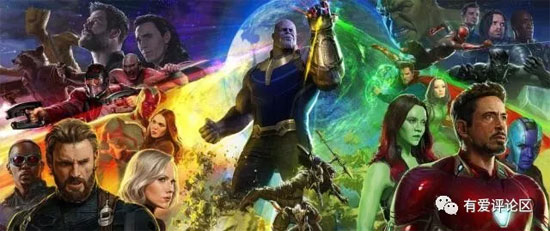
The film’s central plotline is straightforward: “How Thanos acquires the six Infinity Stones to fulfill his grand vision.” Building on this foundation, the sprawling cast is divided into distinct groups, each following their own subplots to advance the narrative. Some major characters never even cross paths throughout the entire story—a far more sophisticated approach than cramming all heroes onto a single battlefield for chaotic combat (though that does sound rather entertaining).
The greatest benefit of this approach is that it ensures the interactions among numerous characters remain logical and engaging while minimizing excessive clutter and unwieldy complexity.
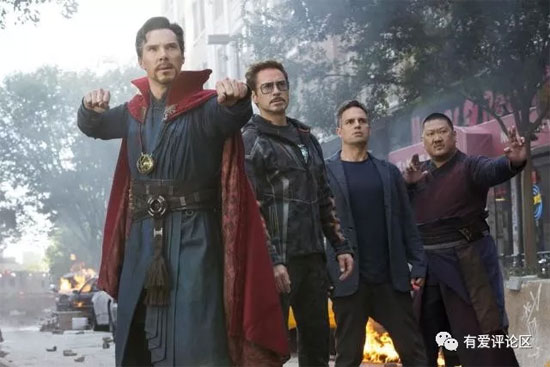
The film opens with Thanos attacking the Asgardian refugee ship, immediately establishing the theme by securing two Infinity Stones (the Power Stone and the Space Stone). Characters then swiftly assume their roles, advancing their respective stories in parallel.
The first storyline revolves around the Time Stone. Back on Earth, Bruce Banner issues a warning as he and Doctor Strange, the King, Tony Stark, and others encounter the first wave of gem-hunting scouts.
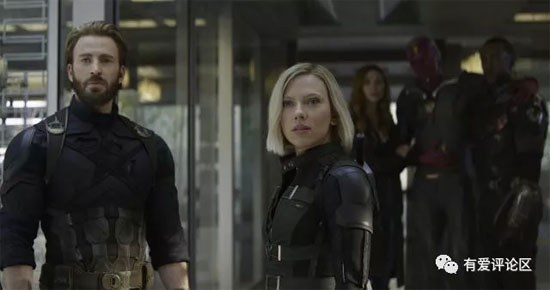
The second storyline centers on the Mind Stone. Wanda and Vision are ambushed by the second wave of “treasure hunters,” drawing in Captain America, Black Widow, Falcon, War Machine, and others. To resolve the crisis, they journey to Wakanda seeking Black Panther’s aid, thereby setting the stage for the final battle.
The third storyline targets the Reality Stone. The Guardians of the Galaxy find a powerless Thor and grasp the gravity of the situation. They split into two teams: one to confront the Collector at his source, the other to forge divine weapons (casting “The Little Devil” Peter Dinklage as a giant dwarf is truly imaginative).
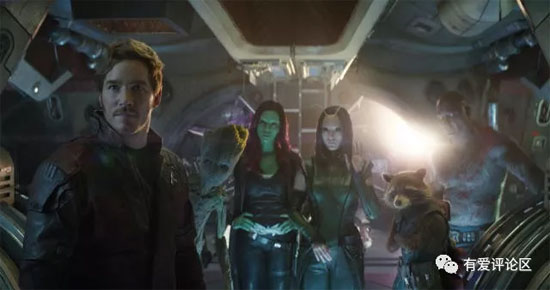
The first half of the film’s segmented narrative remains cohesive despite its complexity, effectively serving as a sequel to six Phase Three films: Captain America 3, Doctor Strange, Guardians of the Galaxy Vol. 2, Spider-Man, Thor 3, and Black Panther. While building upon the established outcomes of each story’s conclusion, it also delivers fresh “clash of the titans” experiences.
From the midpoint onward, these storylines undergo higher-level branching, intersecting, and advancing. Examples include Thanos abducting Gamora to initiate the Soul Stone quest, and the Earth strike team and Guardians squad bonding through conflict. After witnessing these emerging subplots, the film’s conclusion becomes increasingly predictable.
While the plot threads are masterfully woven, as the culmination of Marvel’s phase, the action sequences and grand spectacles are equally crucial. Avengers: Infinity War elevates the banter and revolutionizes the fight scenes. Though the quantity may leave some wanting more, the quality is undeniably impressive.
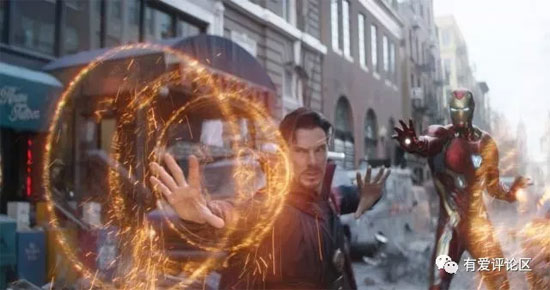
Take the two “Sherlocks”—not only do they shoulder leadership and strategic duties, but their firepower output is also visually stunning. The magical-meets-tech combo sparks fascinating chemistry, and the space suit they outfit Spider-Man with is refreshingly novel.
The climactic battle on Titan, where two teams clash against Thanos, stands out as the film’s finest combat sequence. Iron Man, Doctor Strange, and Spider-Man each bring distinct tactical approaches, while the addition of Star-Lord, Mantis, Drax (and the last-minute recruit Nebula) further expands the possibilities, unlocking countless strategic avenues.
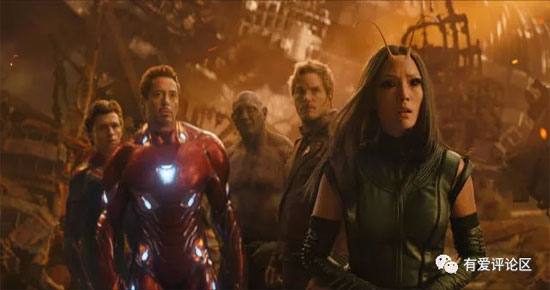
In this regard, the Earth-based heroes were slightly overshadowed. Vision and Wanda struggled to perform at their best due to their emotional turmoil, while Captain America and others faced inherent limitations…
Fortunately, the climactic “Battle for Wakanda” made up for all shortcomings. It featured shields repelling enemies, large-scale troop charges, boss-level heroes going one-on-one, and coordinated team assaults. Especially when Thor, reborn from the flames, arrived on the battlefield to slaughter foes left and right—that moment was undoubtedly the crowd-roaring climax of the entire show.
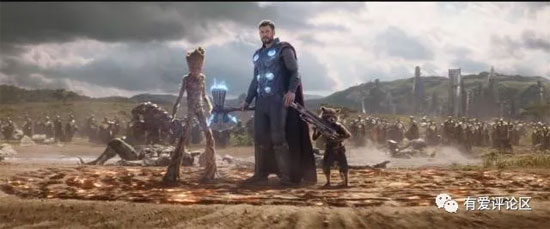
With these two major strengths, Avengers: Infinity War is certainly a remarkable masterpiece. Yet in my view, it still leaves room for regret.
This regret stems precisely from the character given the most focus—the film’s true protagonist: Thanos.
Marvel went to great lengths to prepare for Thanos’ grand entrance—one could even say the entire 18-film setup was paving the way for him. With such extensive groundwork and his supremely unmatched power, he naturally commands awe and exudes an air of unrivaled dominance.
In the film, Thanos is a powerful figure with grand ambitions. To maintain the universe’s long-term balance and prosperity, he is willing to eliminate half of all life to preserve resources for the other half, steadfastly carrying out his plan even while burdened by immense guilt.
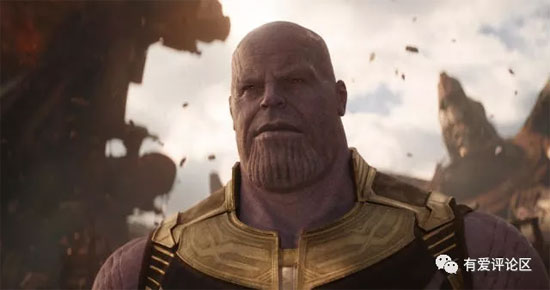
I won’t delve into the merits of Thanos’ ideology here (personally, I don’t agree with it), but I do want to discuss the credibility, authenticity, and persuasiveness of this concept.
Typically, those who preach “greater good” while wielding slaughter are hypocritical liars. Human nature breeds desire, and their claims of “randomness, fairness, survival” are invariably tainted by deceit and self-interest… But Thanos is different. It’s clear he genuinely embraces this thankless task as his ideal—it is his dream, his conviction.
If any doubts lingered before, the sequence securing the Soul Stone proves just how earnest Thanos is: he genuinely loved his daughter Gamora. Even while committing “inhuman” acts, he carried “human” attachments and pain.
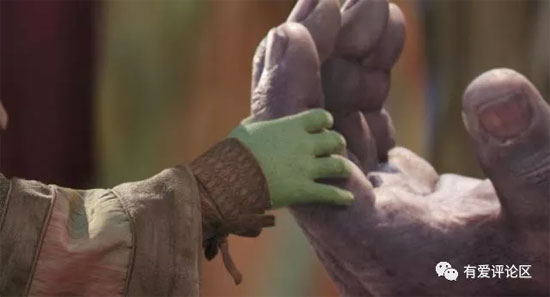
This is precisely what feels most off-kilter about Avengers: Infinity War. Despite dedicating significant screen time to exploring Thanos’s ideals and his bond with Gamora, his motivations and actions remain unconvincing: We cannot grasp his obsession with mass extermination through mere words, nor can we truly feel the heartbreak of his sacrifice for his beloved daughter based on a few newly introduced scenes.
In short, I accept Thanos’s introduction, actions, and consequences, but I cannot be convinced by his motivations and backstory.
Given the film’s limited runtime, it’s understandable that not everything could be covered… Yet this shortcoming remains a thorn lodged at the heart of Avengers: Infinity War.
…Like everyone else, I was stunned by the film’s closing roll of casualties. At least fifteen characters departed from start to finish—Marvel truly went all out this time, leaving us every reason to wail in grief… But remember Doctor Strange’s scene?
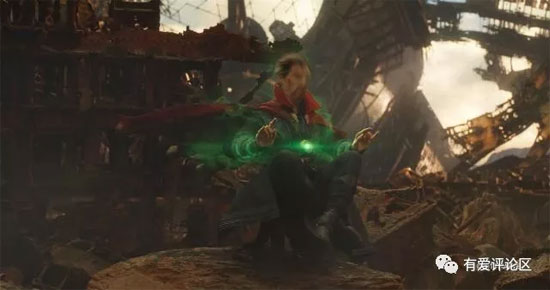
(Having seen 14,000,605 different endings without spoiling a single one—not even death spoilers)
This awful Bad Ending was perhaps exactly what he expected. The game isn’t over yet; there’s still hope for a comeback.
Now, let’s talk about the title: “Why Do We Love Building Sand Sculptures?”
We are born with two desires: “building” and “destruction.” These two forces coexist and cancel each other out, perfectly embodied in the simple act of building sandcastles (or with blocks, card houses, dominoes, etc.). Some enjoy the process of stacking, sculpting, and expanding—even fixing it in place for permanent preservation. yet many derive greater pleasure from the instant gratification of toppling it all down. Marvel is currently doing precisely that—destroying half the sandcastle they painstakingly built over a decade in their 19th film. Audiences emotionally invested in this grand edifice are understandably furious.
But let’s not forget: sandcastles and such can be rebuilt after being knocked down.
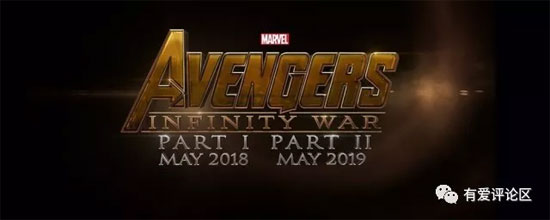
Upon reflection, Infinity War was originally planned as a two-part saga before being split into parts 3 and 4. With all original Avengers surviving, plus Doctor Strange’s cryptic hints and the obvious clues in the post-credits scene… our unresolved emotions will only find closure after Avengers: Endgame next year.
One must admire Marvel’s foresight and boldness. They understand the issue of “aesthetic fatigue” better than anyone. Their third-phase films now demonstrate the courage to break old structures to build new ones. Marvel’s path forward may well become broader and extend farther than ever before.
Please specify:Anime Phone Cases » Avengers: Infinity War 復仇者聯盟3:無限戰爭 2018 Film Review: Why do we love building sand sculptures?